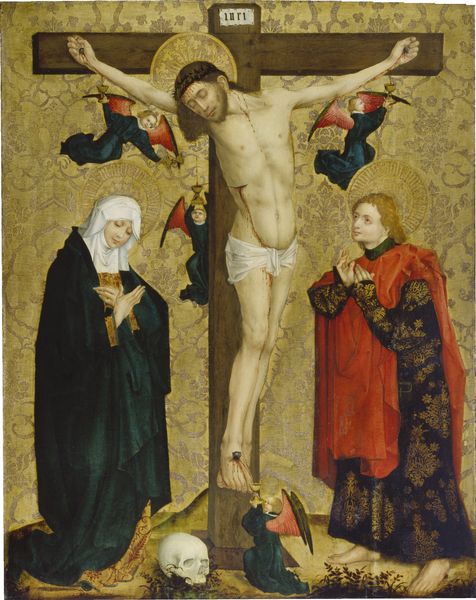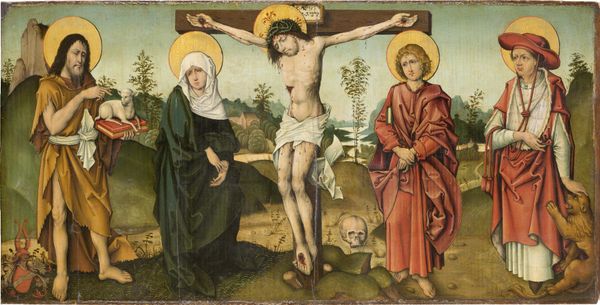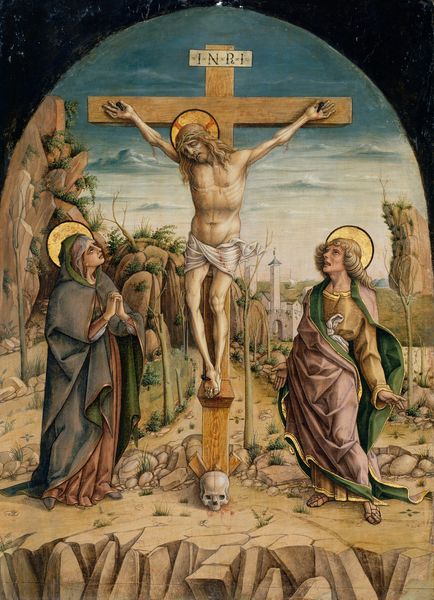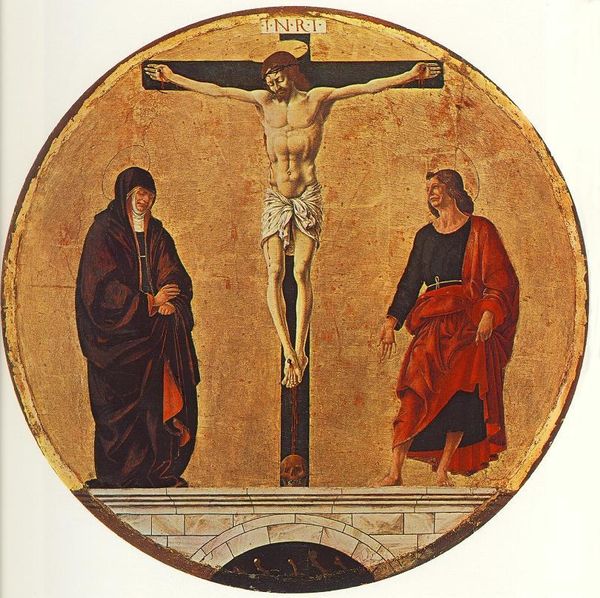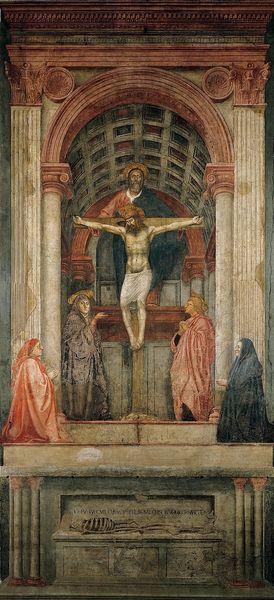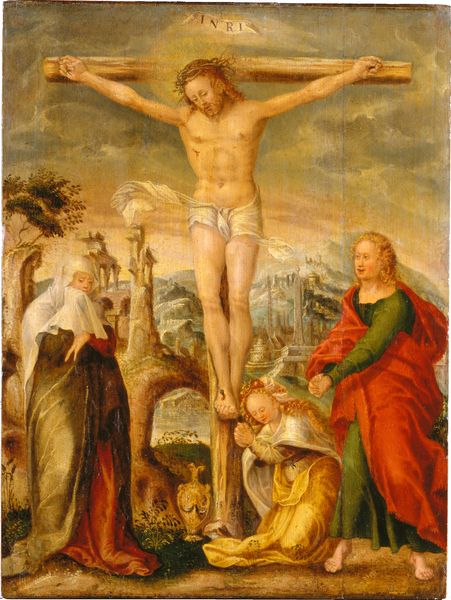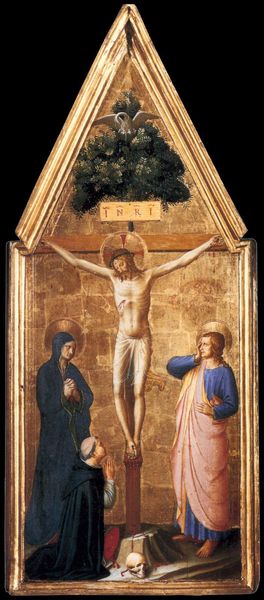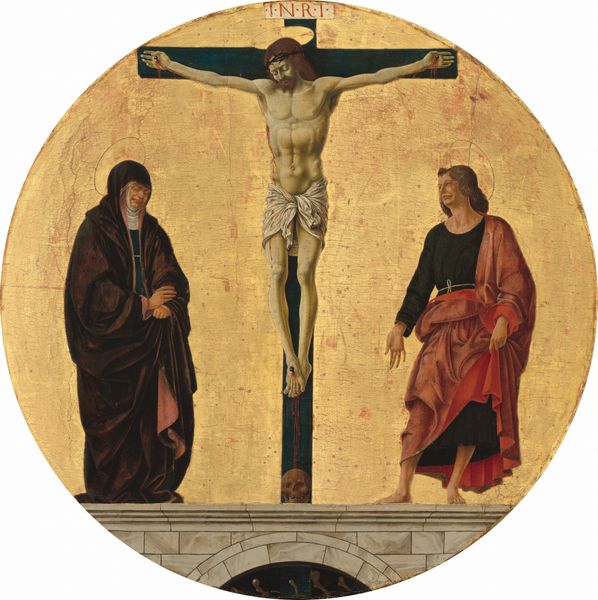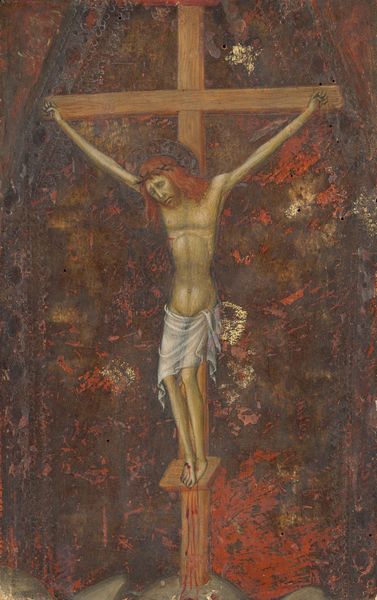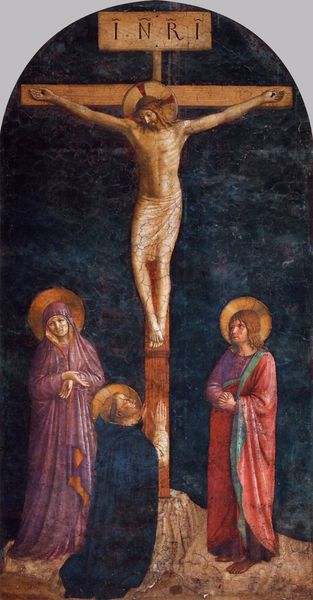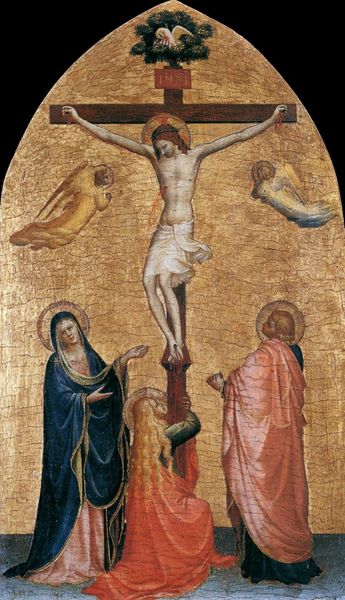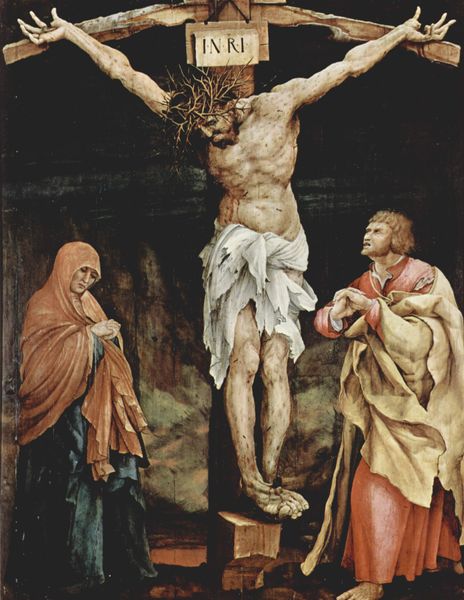
tempera, painting
#
high-renaissance
#
tempera
#
painting
#
figuration
#
oil painting
#
history-painting
#
italian-renaissance
#
nude
Dimensions: height 26 cm, width 18 cm, height 40.1 cm, width 32.2 cm
Copyright: Rijks Museum: Open Domain
Editor: This is "Crucifixion of Christ, with the Virgin and St John," a tempera painting from around 1535-1540, currently held in the Rijksmuseum and attributed to an anonymous artist. I’m struck by the contrast between the rigid figures and the soft, almost dreamlike, background. What do you see in this piece? Curator: Initially, I am drawn to the painting's overall composition and the formal arrangement of figures. The central placement of Christ on the cross, flanked symmetrically by the Virgin and St. John, creates a sense of balance, but note how the patterning of the backdrop flattens the perspective, pushing the scene forward. This contrasts sharply with the modeling of Christ's musculature, creating visual tension. The tempera medium itself lends a particular matte texture, subduing the vibrancy of color often associated with the High Renaissance. Editor: That's interesting. I hadn't really considered the way the background impacts the perspective. How does the use of tempera change our understanding of the piece? Curator: Tempera's fast-drying nature necessitated precise planning and execution, with layering rather than blending being the dominant technique. Do you observe that this influences the degree of naturalism achievable, compelling a different sort of viewership engagement? It’s a matter of surface and the constructed illusion. Editor: Yes, I see what you mean. The limited blending almost makes it feel like an elevated, refined drawing. The emphasis shifts away from trying to capture perfect realism to appreciating the skill and intentionality behind each line and color choice. Curator: Precisely. Focusing on such aspects reveals a dedication to formalized principles, highlighting construction over sheer representation. A rigorous adherence to the artist's chosen style. Editor: This has given me a completely new appreciation for the artist's skill and intention. Curator: Indeed, engaging in close formal analysis enables us to decipher the artistic choices shaping the piece, broadening the possibilities of interpretation.
Comments
rijksmuseum about 2 years ago
⋮
Tyrolean glass painters often used engravings by the Italian artist Marcantonio Raimondi as a model. That is the case for this reverse-glass painting: the glass painter only added the splendid starry sky. The process of glass painting is the reverse of that for an ordinary painting: fine details are applied first on the back of the glass panel and the rest of the image is subsequently steadily worked up around them.
Join the conversation
Join millions of artists and users on Artera today and experience the ultimate creative platform.
